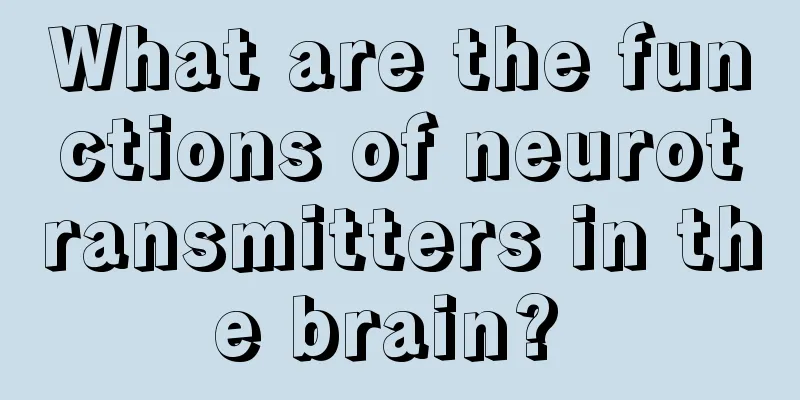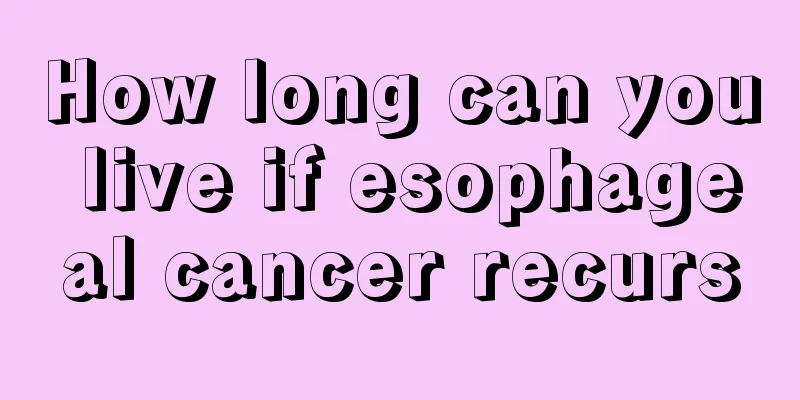What are the functions of neurotransmitters in the brain?

|
As we all know, there are a lot of nerves distributed in the human body. The reason why people can do many things in an orderly manner and the reason why human behavior can be controlled by the brain in an orderly manner is that neurotransmitters play an irreplaceable role in these life activities. There are many ways of human nerve transmission, such as transmission through chemical substances, so what are the uses of neurotransmitters in the brain? Use of neurotransmitters in the brain: Synthesis of transmitter Acetylcholine is synthesized from choline and acetyl-CoA under the catalysis of choline acetyltransferase (choline acetyltransferase). Since the enzyme is present in the cytoplasm, acetylcholine is synthesized in the cytoplasm and then taken up and stored by vesicles. The synthesis of norepinephrine uses tyrosine as raw material. First, dopa is synthesized under the catalysis of tyrosine hydroxylase, and then dopamine (catecholethylamine) is synthesized under the action of dopa decarboxylase (amino acid decarboxylase). These two steps take place in the cytoplasm. Dopamine is then taken up into vesicles, where it is further synthesized into norepinephrine by dopamine β-hydroxylase and stored in the vesicles. The synthesis of dopamine is exactly the same as the first two steps of norepinephrine, except that norepinephrine is no longer synthesized after dopamine enters the vesicles because the vesicles storing dopamine do not contain dopamine β-hydroxylase. The synthesis of 5-hydroxytryptamine uses tryptophan as raw material. First, 5-hydroxytryptophan is synthesized under the action of tryptophan hydroxylase, and then 5-hydroxytryptophan is synthesized into 5-hydroxytryptamine under the action of 5-hydroxytryptophan decarboxylase (amino acid decarboxylase). These two steps take place in the cytoplasm; then 5-hydroxytryptamine is taken up into vesicles and stored in the vesicles. GABA is synthesized from glutamate by catalytic decarboxylation of glutamate. The synthesis of peptide transmitters is exactly the same as that of other peptide hormones. It is regulated by genes and synthesized through translation on ribosomes. Release of transmitter When the nerve impulse reaches the terminal, the terminal generates an action potential and ion transfer Ca2+ from outside the membrane to inside the membrane, causing a certain number of vesicles to fuse tightly with the presynaptic membrane. Then a rupture appears at the adhesion between the vesicles and the presynaptic membrane, and the neurotransmitters and other contents in the vesicles are released into the synaptic cleft. The process of releasing neurotransmitters from the presynaptic membrane is called exocytosis or efflux. In this process, the transfer of Ca2+ is important. If the extracellular Ca2+ concentration is reduced, the release of neurotransmitters is inhibited; while if the extracellular Ca2+ concentration is increased, the release of neurotransmitters is increased. This fact shows that the amount of Ca2+ entering the membrane from outside is directly related to the amount of neurotransmitter released; Ca2+ is a necessary factor for the close fusion of the vesicle membrane and the presynaptic membrane. It is generally believed that Ca2+ may have two effects: ① Reduce the viscosity of the axoplasm, which is beneficial to the movement of vesicles; ② Eliminate the negative potential in the presynaptic membrane, making it easier for vesicles to contact and fuse with the presynaptic membrane. When the vesicle ruptures and releases neurotransmitters and other contents into the synaptic cleft, its outer shell can still remain in the presynaptic membrane (it can also fuse with the presynaptic membrane and become a component of the presynaptic membrane), and can later return to its original state and continue to synthesize and store neurotransmitters. The exocytosis of synaptic vesicles to the restoration of vesicle membrane can be divided into the following six phases: ① Synaptic vesicles approach the active zone of the presynaptic membrane; ② Vesicles adhere to the synaptic fence structure; ③ The vesicle contacts the presynaptic membrane and the two membranes fuse; ④ The fusion membrane splits and releases neurotransmitters into the synaptic cleft; ⑤ The vesicle membrane is incorporated into the presynaptic membrane; ⑥The bubble membrane is recovered and reused. During the recycling process of vesicle membranes, some membranes do not form functional vesicles and do not enter the circulation. Instead, they are degraded by lysosomes and returned to the cell body for reprocessing through reverse axoplasmic transport. At the same time, new vesicles are delivered to nerve terminals via anterograde axoplasmic transport. After being released from the presynaptic membrane, neurotransmitters immediately bind to the corresponding postsynaptic membrane receptors, generating a synaptic depolarization potential or hyperpolarization potential. Resulting in an increase or decrease in the excitability of the postsynaptic nerve. From then on, the electrical signal of the nerve impulse has completed a crossing between synapses. |
>>: What's wrong with sweating, dizziness and discomfort
Recommend
What harm does board washing water do to the human body
When talking about motherboard cleaning water, ma...
How to treat benign hemangioma? Treatment of benign hemangioma
Hemangioma is a benign tumor that often appears a...
Where do the scalene muscles originate and insert?
The scalene muscles are actually a muscle group, ...
What are the benefits of reverse breathing
If the human body stops breathing, life will end....
Can lung cancer cause skin cancer?
In recent years, skin cancer has gradually risen ...
Symptoms of hand synovitis
In fact, synovitis in the hands is quite common, ...
Is bamboo cutting board good?
A cutting board is a must-have tool in every kitc...
Clean 7 David's life and death corners to eliminate close-fitting bacteria
In life, bacteria are everywhere. Sanitary napkin...
Is sodium hyaluronate hyaluronic acid?
As the variety of cosmetics and skin care product...
Can ginger be used to wash hair for a long time?
When there is a problem with the scalp or hair, t...
Can baby wipes be used to wipe private parts?
We often use wet wipes in our daily life, and mos...
How to eat during lung cancer surgery? Diet care methods during lung cancer surgery
Generally speaking, patients with lung cancer wil...
Will essential oils cause allergies?
Most essential oils are a kind of oily substance ...
How long can you live with endometrial cancer?
Cancer, like a demon, has been eroding women'...
How is prostate cancer caused
How is prostate cancer caused? Prostate cancer ma...









